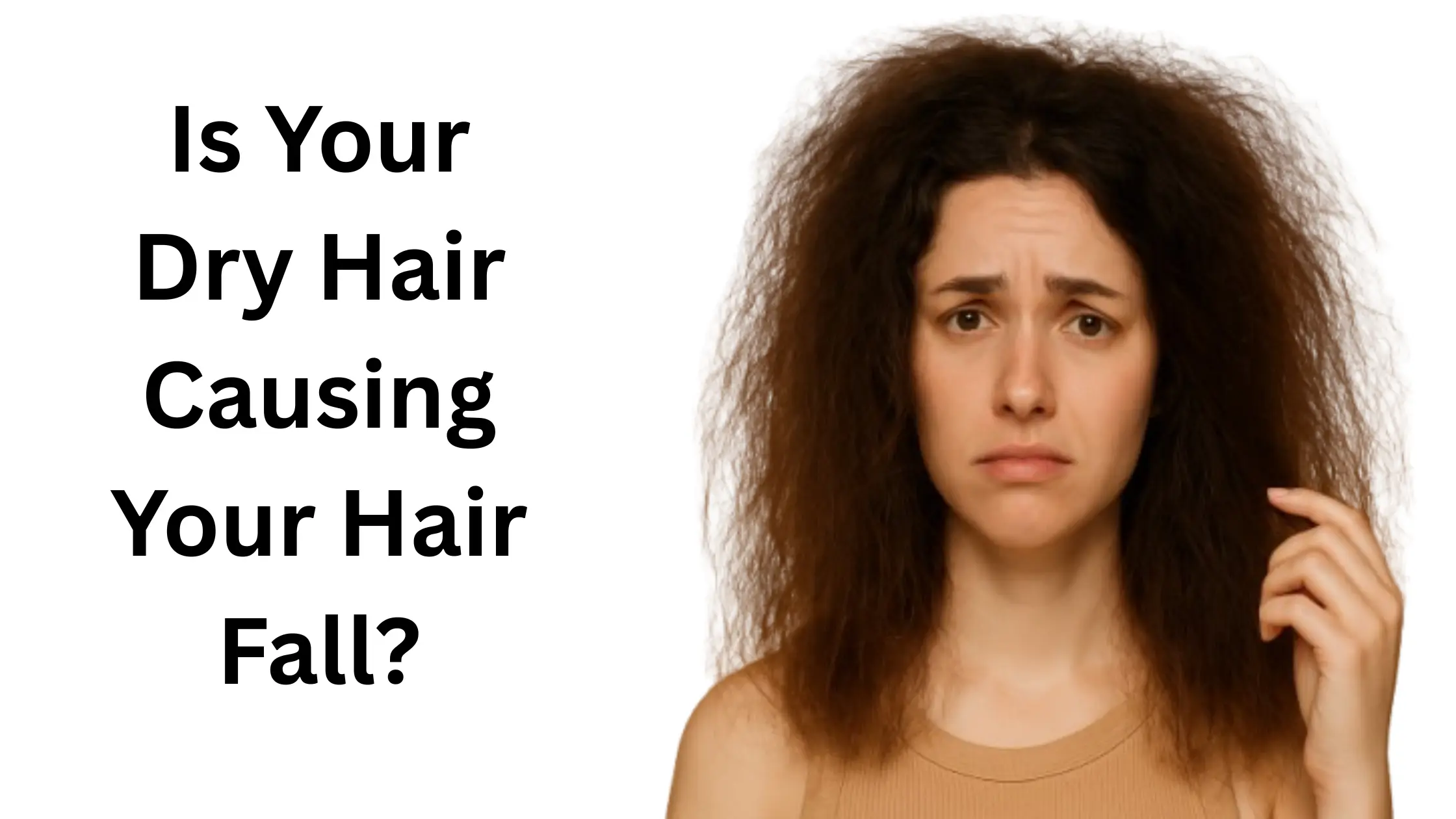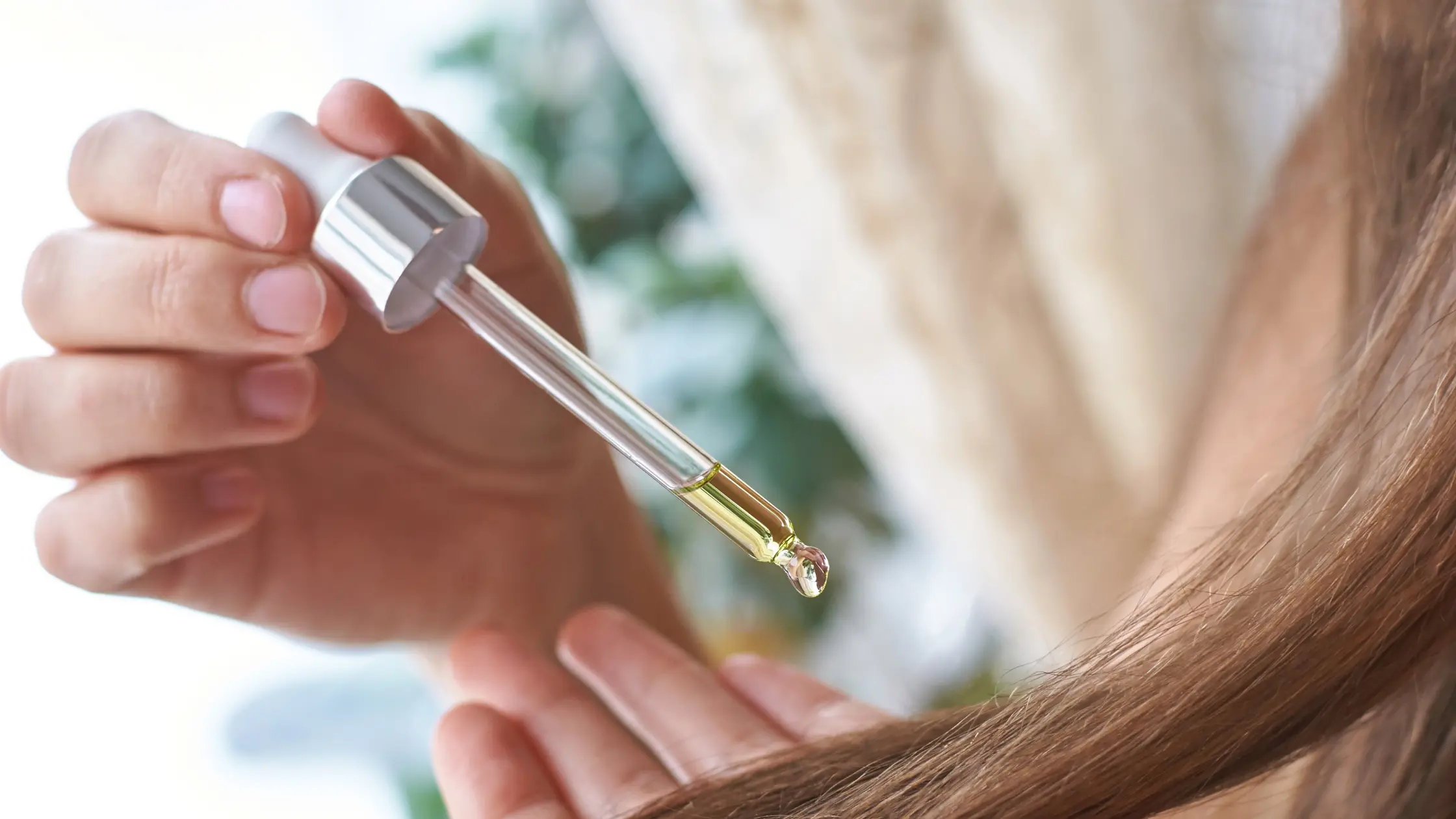Let’s get one thing straight, dry hair isn’t just a texture. More often than you would realize, it’s a cry for help. A dehydrated, frizz-fueled SOS that eventually leads to one of the worst hair problems of all time: hair fall. And not the poetic kind that gently graces your brush, we’re talking clumps in the shower drain, sad strands on your silk pillowcase, and a ponytail that suddenly feels…thinner.
But don’t cancel your blowout just yet. I am here with an elite, expert-approved hair care routine to reduce hair fall caused by dryness. This regime not only hydrates like a Korean sheet mask for your scalp but also shields each strand with extra TLC and prevents hair fall.
Here’s your blueprint to stop dryness-triggered hair fall in its tracks while still looking like you stepped out of a salon.
Why Dry Hair Causes Hair Fall?
Let’s quickly dissect the science (don’t worry, I’ll keep it sexy):
- Dry hair lacks sebum, the natural oil that protects your strands and scalp. Without it, the hair cuticle lifts, making strands brittle and breakage-prone.
- Prone to tangles and breakage: Dry hair lack nourishment which often leads to hair tangling often. This in turn causes hair breakage and split ends.
- Dehydrated scalps are more prone to inflammation, flakes, and poor follicle health—hello, hair fall.
- Heat styling, hard water, harsh shampoos, and even sun exposure strip the scalp’s protective barrier, causing hair to fall faster than fashion trends.
Science-Backed-Practical Routine For Dry Hair-Induced Hair Fall
You don’t just need moisture—you need a moisture strategy. Here’s how to get it.
Pre-Wash Oil Therapy (aka Liquid Gold Hour)
Hair oils replenish the lipid barrier, reduce protein loss, and improve strand elasticity; key for preventing breakage. It also nourishes your scalp and if combined with 5 minutes scalp massage, it strengthens your hair from its roots.
How to do it?
- Warm up your choice of hair oil. For hair fall due to dry hair, we recommend this hair oil.
- Massage into the scalp in gentle circular motions.
- Leave it on for 1–2 hours, max overnight if you’re feeling committed.
For faster results, pamper your oiled hair with steam for 5-10 minutes post-application. It helps the oils penetrate deeper.
Sulfate-Free Shampoo (Because Your Hair Isn’t A Dish to Be Degreased)
Harsh shampoos are like toxic exes—they strip you of everything and leave you worse off.
What to use instead?
Look for shampoos with gentle surfactants (like coco-glucoside), glycerin, and hydrolyzed proteins. Avoid sulfates, parabens, alcohols, and artificial fragrances if you’re prone to scalp irritation.
Shampoo just the scalp, not the ends. Let the rinse-down cleanse your lengths without stripping the moisture more. For a good shampoo to moisturize your dry hair accompanied with hair fall, we recommend this shampoo.
Deep Conditioning (Non-Negotiable, Darling)
Frequency: Twice a week.
Look for shea butter, aloe vera, hyaluronic acid, and keratin for deep hydration. If your hair is super dry, go for a leave-in treatment mask like this one.
Mix a spoonful of honey and a few drops of olive oil into your conditioner. Leave it on for 30 minutes. Rinse with cold water for that glass-hair finish.
Post-Wash Serum or Leave-In Elixir (Your Frizz-Fighting Sidekick)
Purpose:Locks in moisture and prevents frizz-induced snapping.
Look for lightweight silicone-free serums with marula, squalane, or camellia oil. Apply on damp hair. Focus on mid-lengths to ends, and avoid the scalp (we’re going for glossy, not greasy). We recommend this leave-in conditioner and this hair serum.
A tiny bit of aloe vera gel can double as a hydrating leave-in—just don’t overdo it.
Pro-Level Extras (For the Girls Who Do the Most)
- Switch to a silk pillowcase. Cotton robs your hair of moisture.
- Use a microfiber towel or a cotton T-shirt to dry your hair—less friction, less breakage.
- Take hair supplements with biotin, zinc, ginseng and omega-3s (check with your derm first).
- Protect your hair from hard water damage. Hard water is hydration’s worst enemy.
- Minimize heat styling. But if you must, always use a heat protectant like this one.
Signs of Progress (And When To See A Professional)
If your routine is working, you’ll notice:
- less shedding on your brush,
- softer, shinier strands,
- better scalp comfort and fewer flakes.
If hair fall due to dryness continues beyond 3 months despite routine changes, it’s time to seek medical evaluation. Hormonal imbalances, nutritional deficiencies, or autoimmune disorders could be the deeper culprits.
Over To You
Hydration is no longer a luxury, it’s your hair’s life support. The next time your strands feel more hay than halo, remember: dryness is causing your precious hair to fall out. Its the real villain. So take mindful steps, use right products, follow this routine for dry hair and hair fall and more importantly be patient.
By following all these steps, trust me no one will notice you skipped a blowout when your natural hair looks this lush. Before you leave, don’t forget to check out: Why Your Dry Scalp Might Be The Hidden Cause of Hair Fall?
Have a lovely day!








